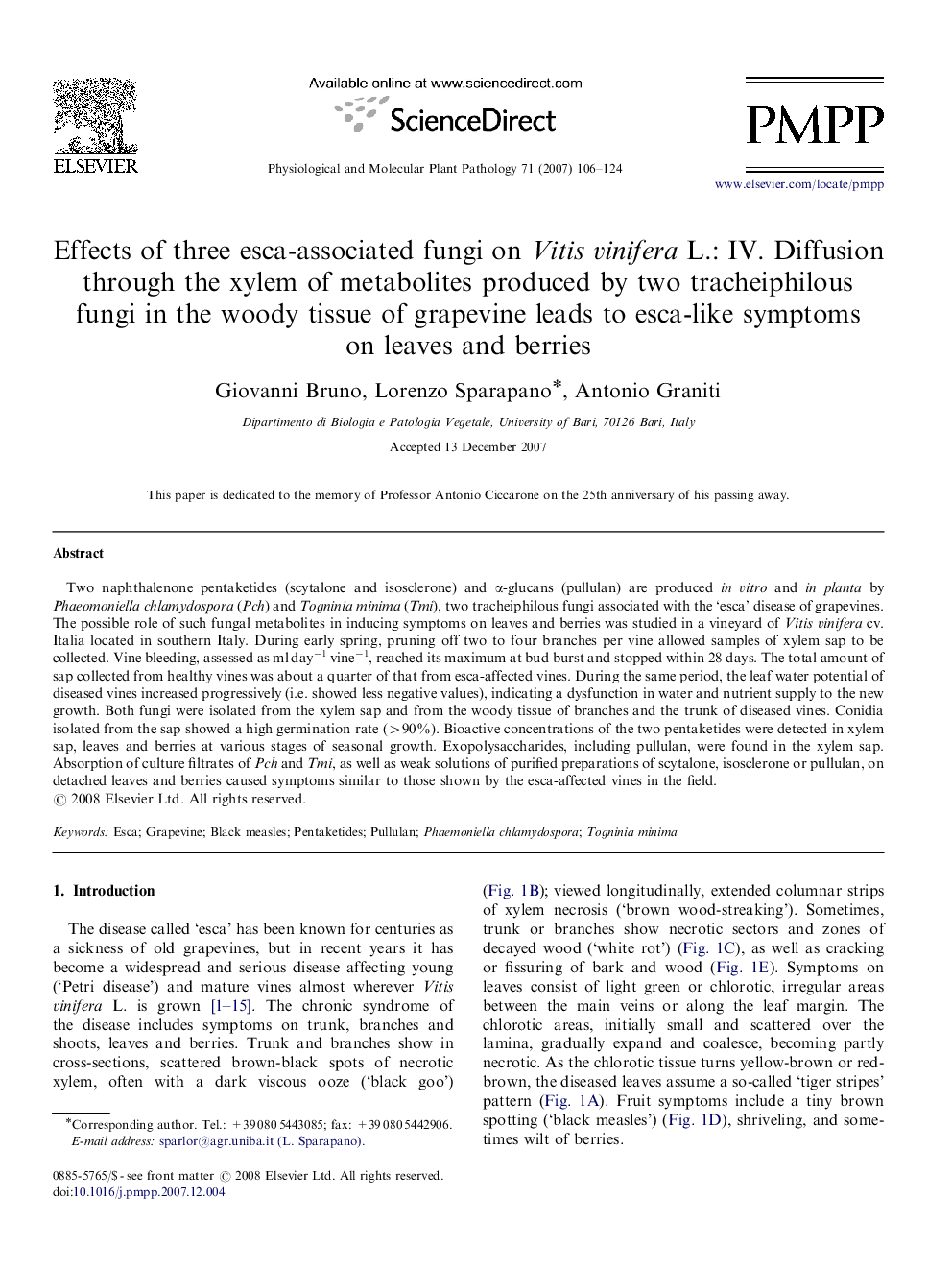| Article ID | Journal | Published Year | Pages | File Type |
|---|---|---|---|---|
| 2836719 | Physiological and Molecular Plant Pathology | 2007 | 19 Pages |
Two naphthalenone pentaketides (scytalone and isosclerone) and α-glucans (pullulan) are produced in vitro and in planta by Phaeomoniella chlamydospora (Pch) and Togninia minima (Tmi), two tracheiphilous fungi associated with the ‘esca’ disease of grapevines. The possible role of such fungal metabolites in inducing symptoms on leaves and berries was studied in a vineyard of Vitis vinifera cv. Italia located in southern Italy. During early spring, pruning off two to four branches per vine allowed samples of xylem sap to be collected. Vine bleeding, assessed as ml day−1 vine−1, reached its maximum at bud burst and stopped within 28 days. The total amount of sap collected from healthy vines was about a quarter of that from esca-affected vines. During the same period, the leaf water potential of diseased vines increased progressively (i.e. showed less negative values), indicating a dysfunction in water and nutrient supply to the new growth. Both fungi were isolated from the xylem sap and from the woody tissue of branches and the trunk of diseased vines. Conidia isolated from the sap showed a high germination rate (>90%). Bioactive concentrations of the two pentaketides were detected in xylem sap, leaves and berries at various stages of seasonal growth. Exopolysaccharides, including pullulan, were found in the xylem sap. Absorption of culture filtrates of Pch and Tmi, as well as weak solutions of purified preparations of scytalone, isosclerone or pullulan, on detached leaves and berries caused symptoms similar to those shown by the esca-affected vines in the field.
